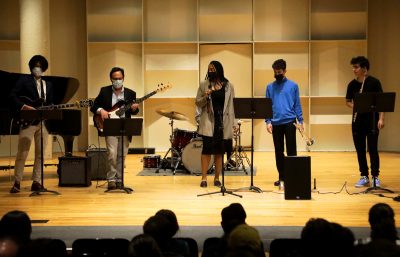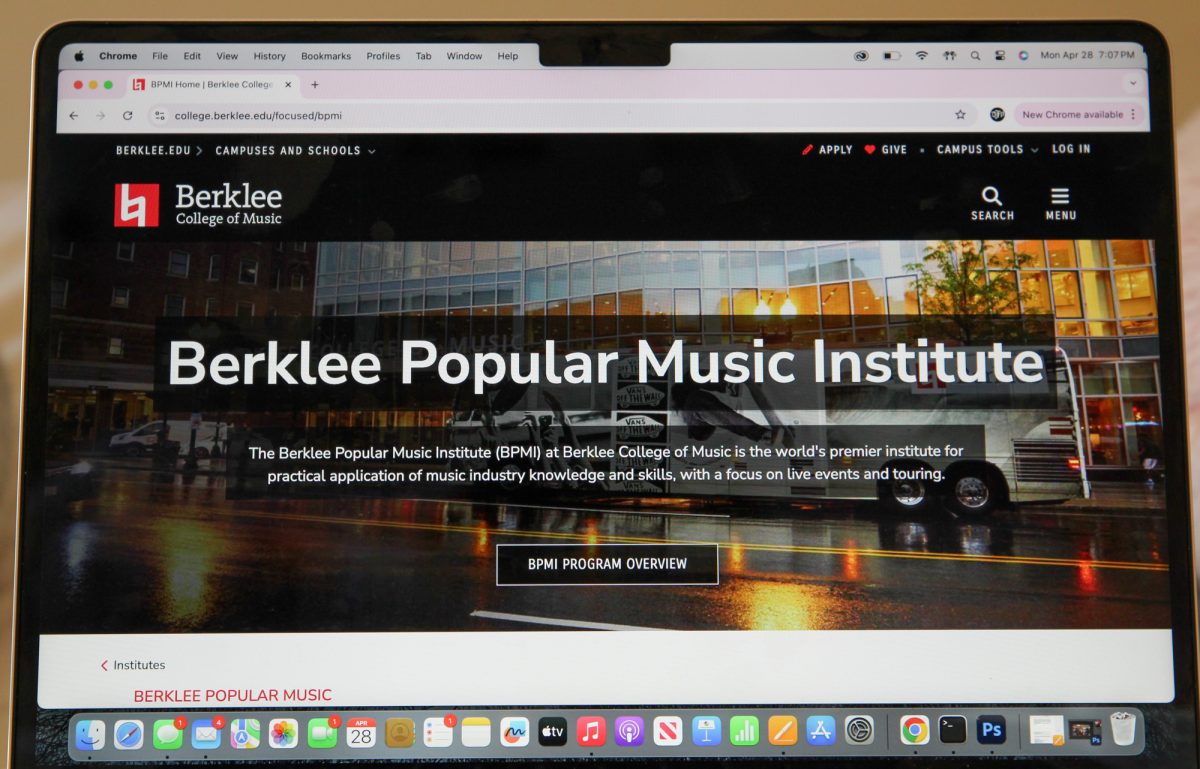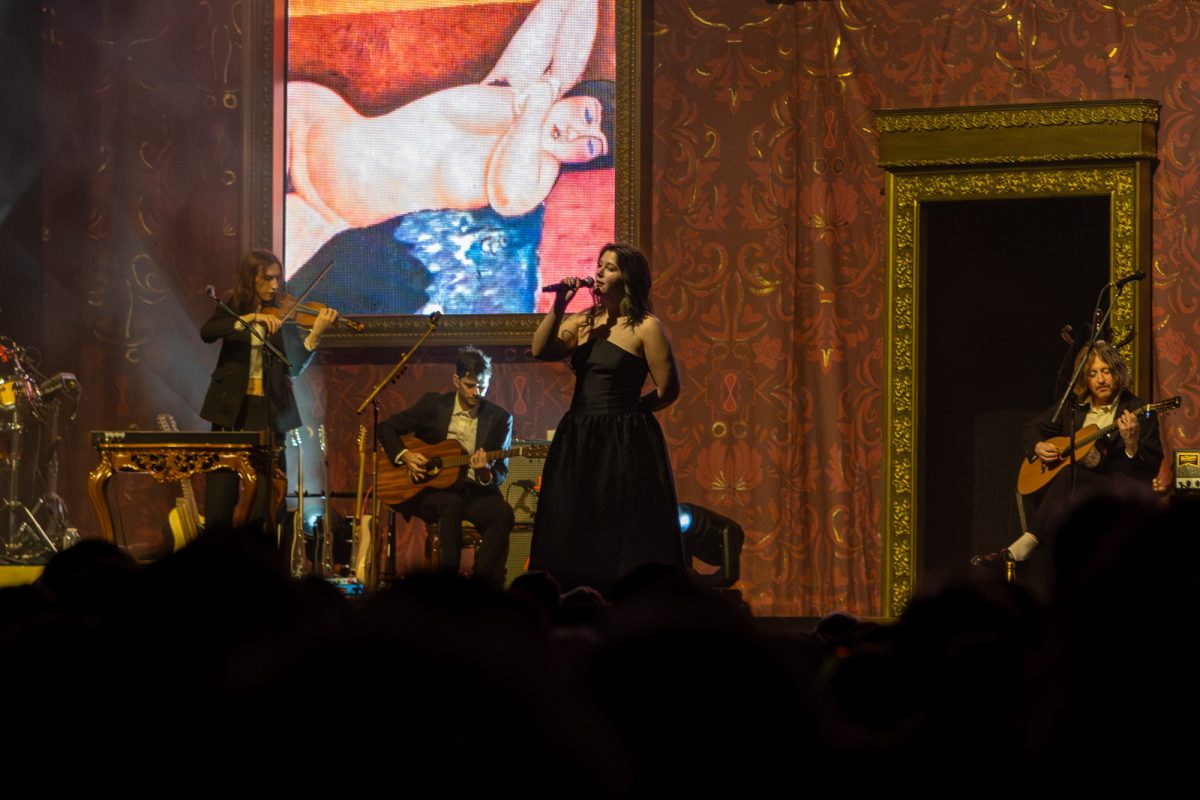Boston University’s jazz groups were busy polishing their sets at the BU Bands building at 300 Babcock St. before their first in-person concert since COVID-19: the Jazz Showcase, on Oct. 21.

The bands performed tonight at the College of Fine Arts concert hall at 8 p.m., with performances by the BU Big Band and two Jazz Combos. A livestream of the event is also available online for those unable to attend.
Since the auditions for BU’s jazz groups in early September, each group has been working toward this showcase, their mid-semester performance. The Jazz Combos — smaller ensembles ranging in size from a trio to upwards of seven or eight players — rehearse twice a week.
Rehearsals for the groups focused less on replaying pieces until perfection and more on constructing the tunes they’ve chosen until they’ve molded into a set-worthy piece. Warren Levenson, a lecturer in music and the director of the Jazz Combos, said experimentation is an essential part of jazz.
“It’s really about experimenting in the rehearsal room and having something emerge, almost under its own power,” Levenson said. “It’s pretty exciting … You never know when a great idea is going to strike.”
Levenson has directed both of BU’s Jazz Combos since 2015. Recently, both combos worked with a mix of pieces ranging from Miles Davis’s “Solar” to Charles Mingus’s “Goodbye Pork Pie Hat,” pieces that range in use of instruments and styles of play.
Instrumentation fluctuates per year as it depends on who auditions, but most groups have a collection of horns, chordal instruments like guitar or piano and a rhythm section with drums and bass.
Rithvik Doshi, a sophomore studying computer science in the College of Arts and Sciences, is playing the baritone saxophone in one of the combos and the Big Band. For him, jazz is about trying out new things and seeing the result.
“I feel like a better musician when I play jazz because it’s a lot more improvisation-focused,” Doshi said. “I could legitimately claim that a lot of the music that I make while I’m playing in the jazz band or the jazz combos is my music.”
For Doshi, playing with a larger collection of musicians also allows for grander performances.
“In jazz music, I think it’s the group and it’s the vibe that makes the music shine more than the individual skill of the instrumentalist,” Doshi said, who will be one of seven saxophone players in the Big Band.
Led by Aaron Goldberg — the director of Athletic Bands, Big Band 1 director and a lecturer in music — the Big Band is a larger jazz ensemble consisting of 19 musicians in different sections.
The Big Band has prepared four pieces for the show, including a composition that Gil Evans wrote for Miles Davis called “Boplicity,” and a modern arrangement of Dizzy Gillespie’s “A Night in Tunisia” by trumpeter Michael Philip Mossman.
“It is just high energy, high intensity, a lot of notes, bombastic Latin rhythms,” Goldberg said about the tune. “The audience should be swept away by the end of it.”
The amount of musicians per section changes with auditions, but this year’s group has five trumpeters, five trombonists, five saxophonists, and four in the rhythm section. Goldberg said there was so much talent at auditions that “it made setting the band really difficult.”
“What I enjoy most is just the caliber of players,” Goldberg said. “This might be the best overall talent in every section … Stuff started coming together so quickly that I was racing to get more music to them because they were digesting it so quickly.”
For all three groups, the showcase is a big welcome back into performing. To comply with COVID-19 protocols for the last year and a half, the Big Band was only allowed to play in groups of 10 and was unable to practice as a full band. Eventually, the group took a break from playing altogether as the rules regarding the playing of wind instruments changed in February of last Spring.
Jazz Combos spent most of their practice time discussing the genre of jazz itself and working the best they could over Zoom. Levenson said because band members would send recordings of audio back and forth when they were virtual, the combo became less of a jazz group and more of a “recording project.”
“That was a completely different beast,” Levenson said. “Nothing like anything that we’ve ever done and nothing like what we’re doing now … But [now] we’re actually playing live music face to face and it feels pretty fantastic to be getting back to that.”
As all groups are practicing together again, the excitement for the first concert back in person was palpable.
“Last year, obviously it was great to get any sort of playing in, but I don’t think the excitement and intensity was there,” Doshi said. “But I can tell you that [now], I’ve been really excited, especially since our last couple of rehearsals … and we can’t wait to share what we have for you.”


























































































































Doug Chappell • Oct 22, 2021 at 5:48 pm
What a nice read on Jazz and part of the BU program offerings.
John • Oct 22, 2021 at 5:31 pm
Nice summary well done.
Cheyenne W • Oct 22, 2021 at 9:44 am
Fantastic article, great work Isabel!